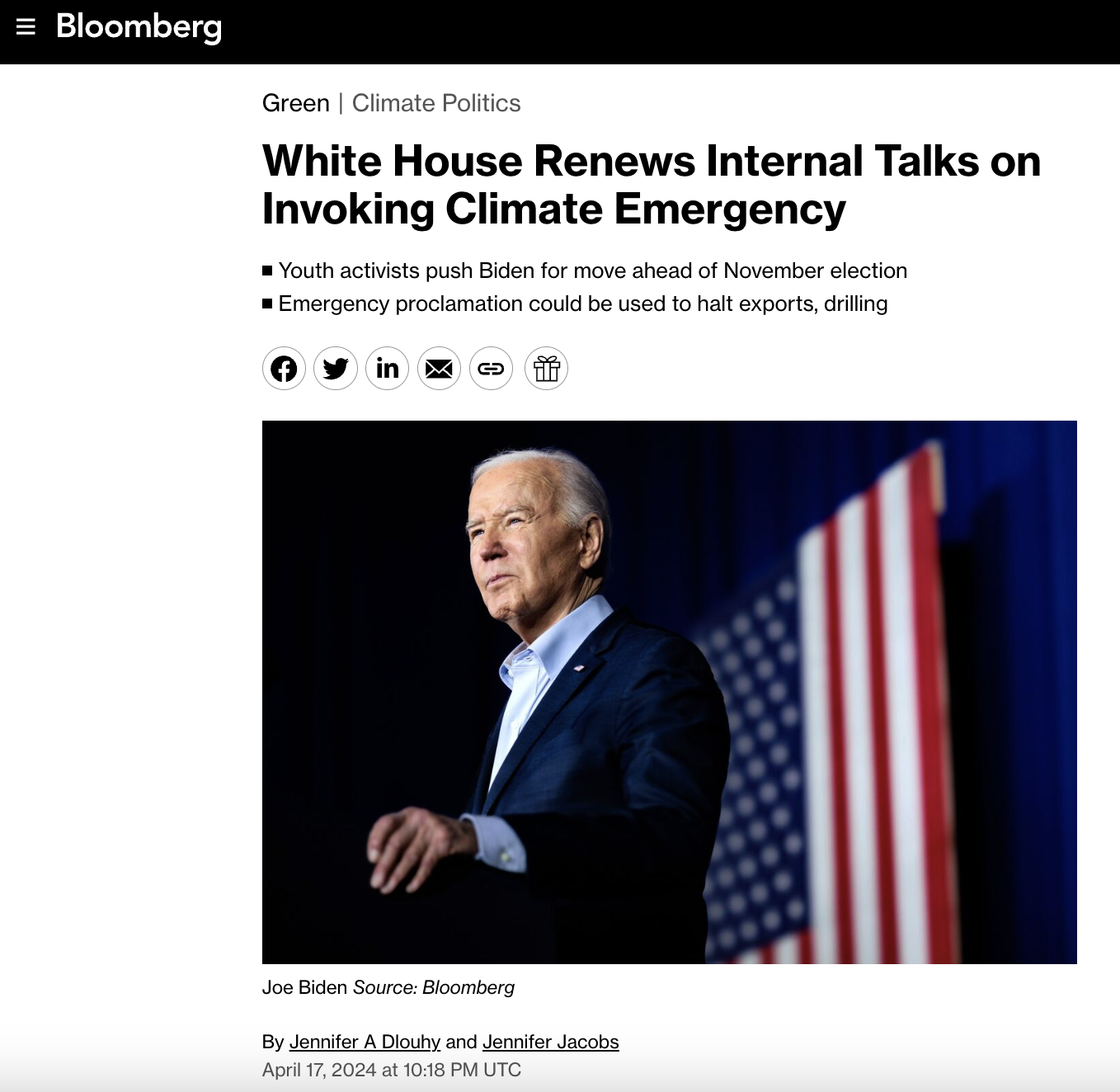By Rupert Darwall
Covid-19 has seen democratic governments exercising coercive powers over their citizens on a scale never imagined. Their justification: Your freedom is someone else’s risk of catching a potentially fatal disease. Having deployed the instruments of social control, politicians and government bureaucrats won’t quietly put them away when the crisis passes – not when other opportunities exist to wield their newfound powers.
Consider, for example, a similar justification for state coercion on environmental protection: Your carbon footprint is my climate change.
The link between Covid control measures and climate change has already been made by the head of Britain’s Committee on Climate Change, a body established in 2008 to hold the government accountable for meeting net-zero emissions targets. (Joe Biden has pledged a similar “enforcement mechanism” by the end of his first term.) “The government has stepped in in a quite extraordinary way to our way of life,” committee chief executive Chris Stark says.
In a powerful philippic against government-by-Covid-decree, Lord Sumption, a former justice on the British Supreme Court, observed that fear has always been the most potent instrument of the authoritarian state. “Fear was deliberately stoked up by the government: the language of impending doom; the daily press conferences; the alarmist projections of mathematical modelers; the manipulative use of selected statistics.”
Similar techniques are deployed with climate change, complete with alarmist language, in this case pertaining to planetary catastrophe. There is a difference, though. With Covid, the death counts are real, the grief and loss genuine, whereas with climate change, abstraction predominates. Average global temperature is a statistical artifact. Limiting the increase in average global temperature to 1.5 degrees Centigrade (2.7 degrees Fahrenheit) above pre-industrial levels is a far lower priority, for most people, than preventing deaths from a novel infectious disease.
No one alive today has experienced a pre-industrial climate; most would probably prefer today’s warmer temperatures. Climate scientists can’t even be certain about the pre-industrial temperature baseline, chosen by European environment ministers to highlight what they saw as the environmental crime of the Industrial Revolution. In the 32 years since a climate emergency was first announced in June 1988, nothing Americans have experienced comes close to the climatic extreme of the Dust Bowl of the 1930s.
The notion of a planetary emergency has a long pedigree. In July 1965, Adlai Stevenson, the twice-defeated Democrat presidential nominee, spoke of humanity traveling on a little spaceship, dependent on vulnerable reserves of air and soil. “We cannot maintain it half fortunate, half miserable, half confident, half despairing, half slave – to the ancient enemies of man – half free in a liberation of resources undreamed of until this day,” Stevenson declared. “No craft, no crew can travel safely with such vast contradictions. On their resolution depends the survival of us all.”
The following year, economist Kenneth Boulding contrasted the reckless, exploitative “cowboy economy,” which regarded consumption as a good thing, with the “spaceman economy,” where mankind’s material wellbeing would be constrained. On spaceships, after all, supplies are rationed. “The less consumption we can maintain a given state with, the better off we are,” Boulding concluded. As with Covid, the spaceship economy carries a strong presumption against personal freedom: What anyone does, anywhere is the concern of everyone, everywhere.
Green growth isn’t the way to salvation or even liberation from the privations of Spaceship Earth. A recent paper in Global Environmental Change points out that improvements in energy efficiency largely served to boost productivity – and enable more growth. But renewable energy swaps highly efficient, energy-rich hydrocarbons for vastly more material-intensive wind and solar while degrading the reliability of the electrical grid.
Energy expert Gautam Kalghatgi estimates that Britain will need the equivalent of at least 110,000 3-megawatt wind turbines to meet its net-zero targets. A single 3-megawatt wind turbine needs 310 metric tons (mt) of steel, 9 mt of copper, 1,200 mt of concrete, 2 mt of rare earth metals, 20 mt of fiber glass, and 28 mt of other plastics and aluminum plus large amounts of oil – and it lasts 20 to 25 years. Multiply all that by 110,000, and you end up with huge environmental impacts and a price tag of $1.4-$2 trillion.
Anti-growth advocates argue that imposing hard caps on resource use is the only realistic prospect for avoiding ecological collapse. But we’ve such talk before: Similar arguments were made in the Limits to Growth debates of the early 1970s. Back then, scientists advising the British government argued that a “fundamental and painful restructuring of our industrial society is necessary if mankind is to survive” and questioned whether the pace of democratic politics was sufficient.
And here we see the common theme between Covid and climate change. Thanks to the virus, governments now know that they can impose draconian restrictions on their citizens. “The government has discovered the power of public fear to let it get its way,” Sumption argues. Net-zero will shrink people’s choices and curtail the lives they wish to lead. Consider Covid a warning of what might yet come.
Rupert Darwall is a senior fellow of the RealClear Foundation and author of THE CLIMATE NOOSE.


